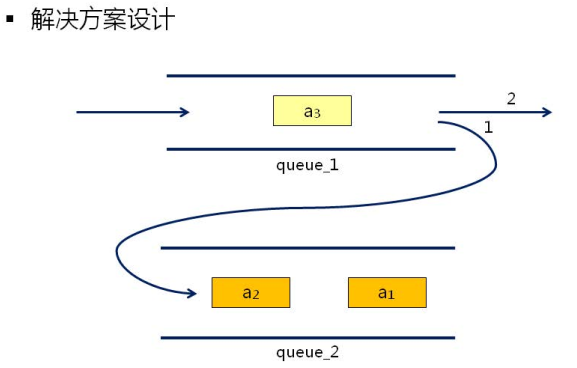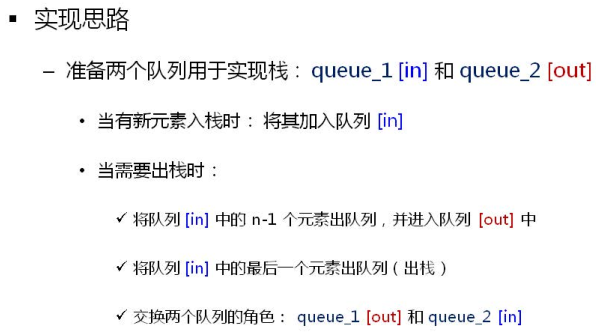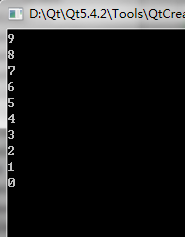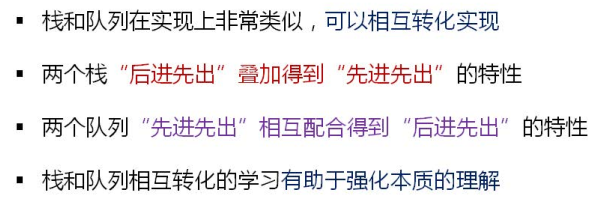问题:能否用队列实现栈?
问题分析:本质为,用队列先进先出的特性实现栈后进先出的特性。


QueueToStack.h
#include <iostream>
#include "linkstack.h"
#include "LinkQueue.h"
using namespace std;
using namespace DTLib;
template <typename T>
class QueueToStack : public Stack<T>
{
protected:
LinkQueue<T> m_queue_1;
LinkQueue<T> m_queue_2;
LinkQueue<T>* m_pIn;
LinkQueue<T>* m_pOut;
void move() const //O(n)
{
int n = m_pIn->length() - 1;
for(int i=0; i<n; i++)
{
m_pOut->add(m_pIn->front());
m_pIn->remove();
}
}
void swap()
{
LinkQueue<T>* temp = NULL;
temp = m_pIn;
m_pIn = m_pOut;
m_pOut = temp;
}
public:
QueueToStack()
{
m_pIn = &m_queue_1;
m_pOut = &m_queue_2;
}
void push(const T& e) //O(1)
{
m_pIn->add(e);
}
void pop() //O(n)
{
if(m_pIn->length() > 0)
{
move(); //转移数据元素
m_pIn->remove();
swap();
}
else
{
THROW_EXCEPTION(InvalidOperationException,"No element in the current queue...");
}
}
T top() const //O(n)
{
if(m_pIn->length() > 0)
{
move(); //将队列中的n-1个元素进行转移
return m_pIn->front(); //因为已经将n-1个数据元素进行了转移,因此队列中还剩一个数据元素,即队头元素,也是最后入队列的元素。
}
else
{
THROW_EXCEPTION(InvalidOperationException,"No element in the current queue...");
}
}
void clear() //O(n)
{
m_queue_1.clear();
m_queue_2.clear();
}
int size() const //O(1)
{
return m_queue_1.length() + m_queue_2.length();
}
};
int main()
{
QueueToStack<int> qts;
for(int i =0; i<10; i++)
{
qts.push(i);
}
while(qts.size() > 0)
{
cout << qts.top() << endl;
qts.pop();
}
return 0;
}

通过上面的打印结果,可以看出可以用队列实现栈的后进先出的特性。
栈的关键操作,时间复杂度非常差。通过这个例子仅仅是为了加强对栈和队列的理解,后进先出和先进先出是可以相互转换的。
